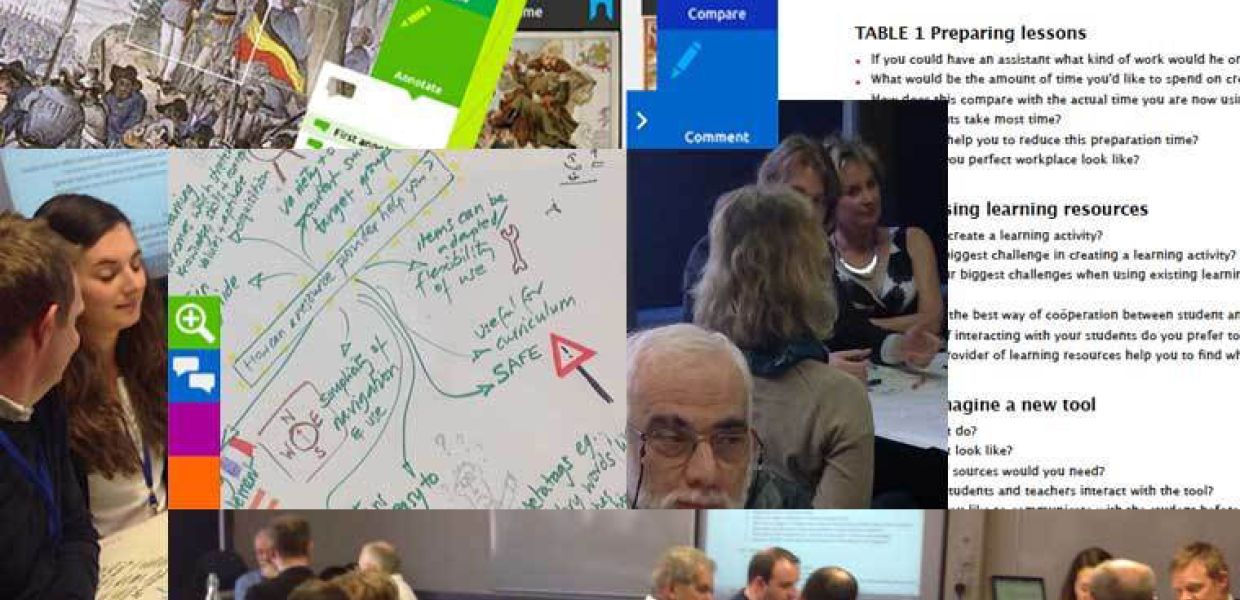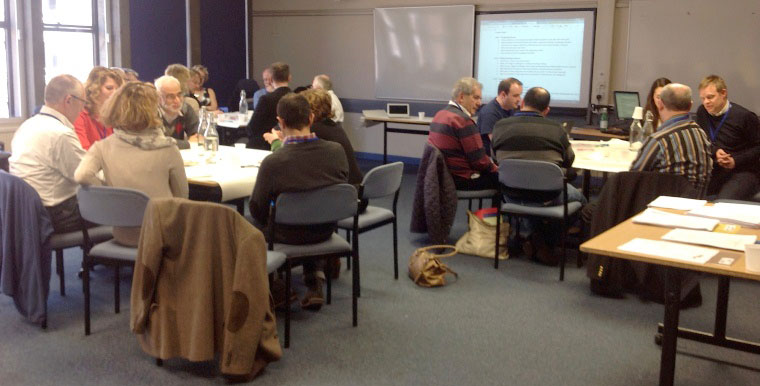UX Session with European Teachers about History Education Tools

Recently Webtic performed a user investigation around the History education tools they are developing in Europeana Creative, with teachers from different countries: England, Ireland, Spain, Portugal, Italy, Netherlands, Germany, and some more. The activity took place during "History beyond textbooks", a Euroclio seminar in London about how to use digital resources for cross-border history education with new tools and approaches.

The UX session was divided into two sessions. The first session focused on getting feedback about the existing website, printed learning materials and the two tools under development (compare and contrast, and visual analysis of sources). Teachers' feedback was either submitted online during the event or handed over on paper immediately afterwards.

During the second session teachers were split into three tables, each addressing a different set of questions:
TABLE 1 - Preparing lessons
- If you could have an assistant what kind of work would he or she take over from you?
- What would be the amount of time you’d like to spend on creating / preparing a lesson?
- How does this compare with the actual time you are now using to prepare a lesson?
- What elements take most time?
- What would help you to reduce this preparation time?
- Describe your perfect workplace!
TABLE 2 - Using learning resources
- How do you create a learning activity?
- What is the biggest challenge in creating a learning activity?
- What are your biggest challenges when using existing learning activities (either book or online)?
- What are the most effective ways of cooperation between students and you as teacher?
- What ways of interacting with your students do you prefer to have in your learning?
- How can a provider of learning resources help you to ?nd what you are looking for?
TABLE 3 - Imagine a new tool
- What could it do?
- How would it look and feel?
- What kind of sources would you need?
- How would students and teachers interact with the tool?
- How would you like to communicate with the students before they start working with the tool?
- Do you want it to be a group or individual activity?
- How do you want the results to be measured / collected?
Through these two sessions, the main goals of the event, getting feedback on products under development in Europeana Creative and obtaining insights about how teachers work throughout different countries, were achieved.
From these results Webtic will define a framework of bottlenecks every teacher is facing when working with online tools, in order to create guidelines for developing educational apps. With these guidelines, it will be possible to fine-tune the existing betas of tools and sketch new possible tools that are of real benefit to the teacher.
